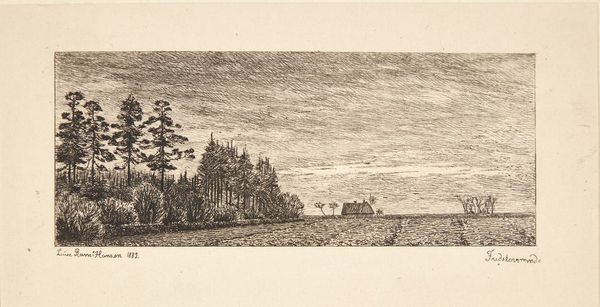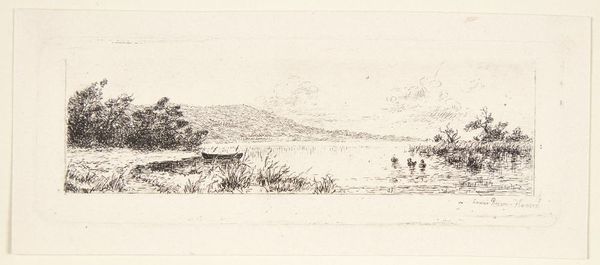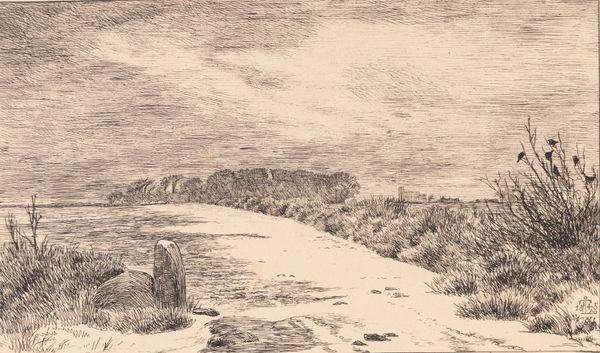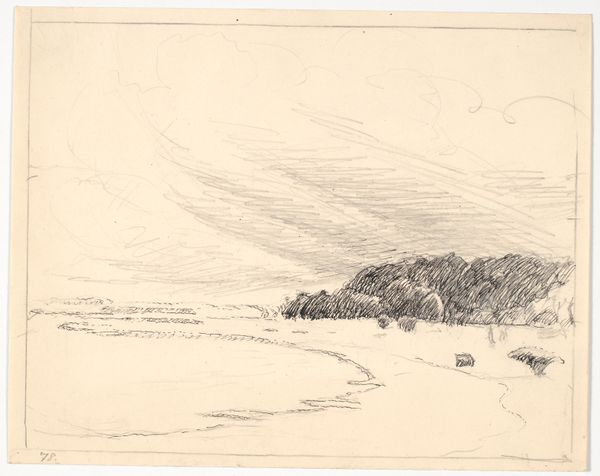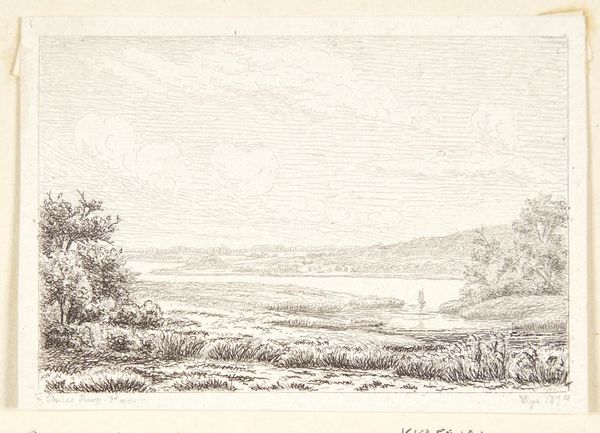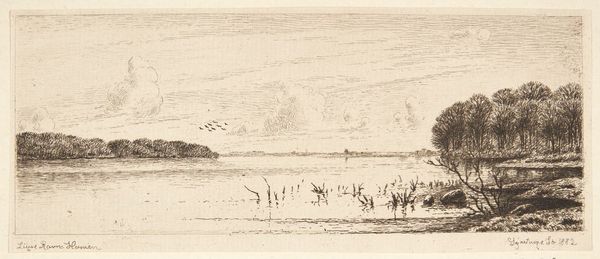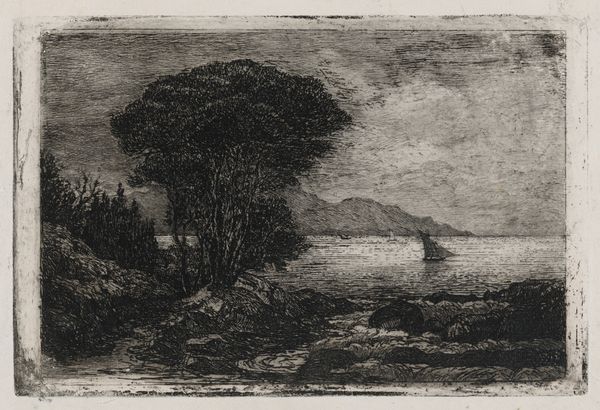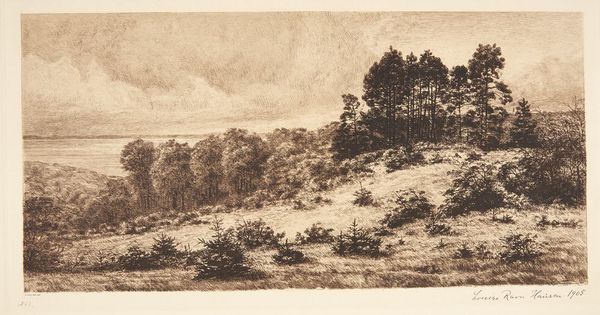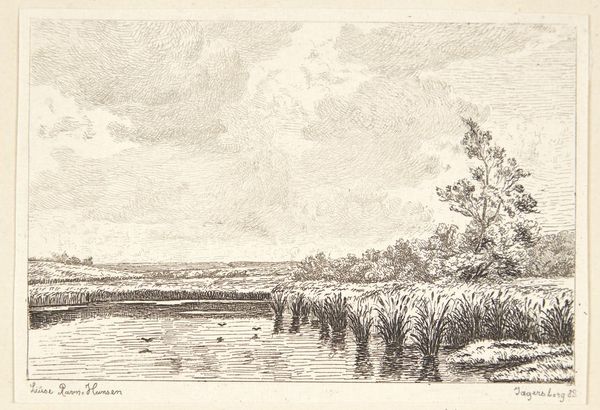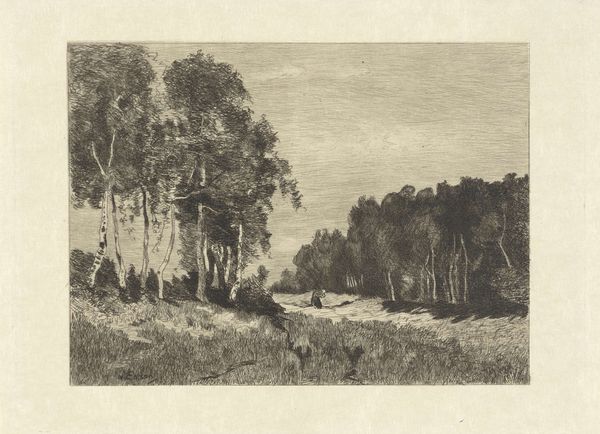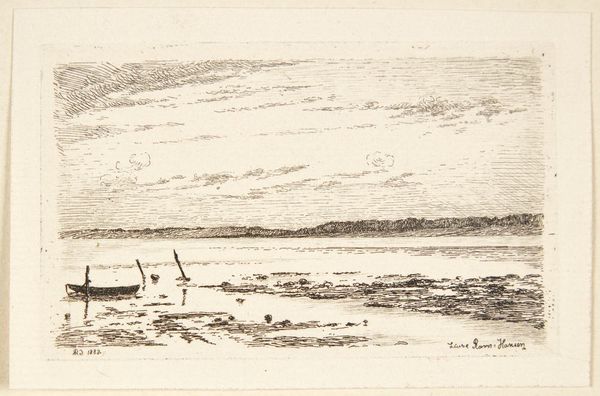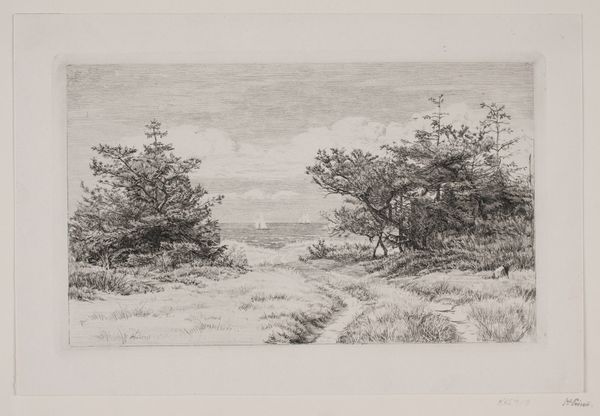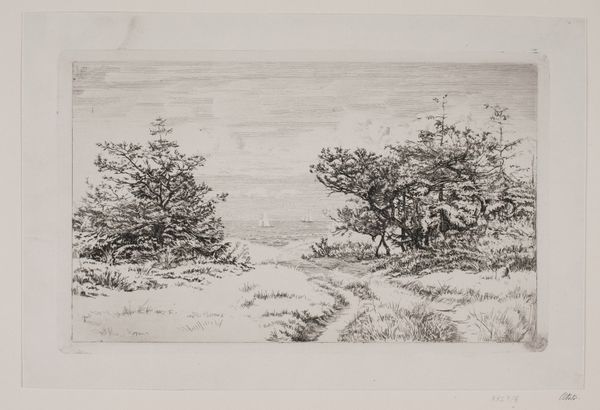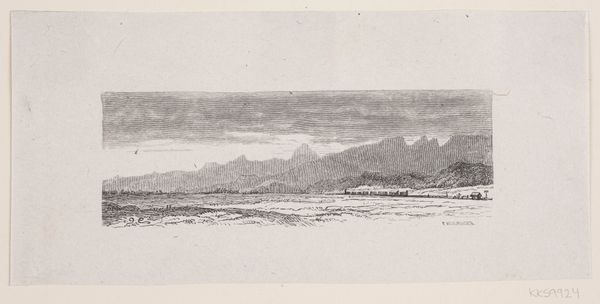
print, etching
#
16_19th-century
# print
#
etching
#
landscape
#
realism
Dimensions: 63 mm (height) x 144 mm (width) (bladmål)
Editor: This is Louise Ravn-Hansen's "Fredskovsminde," an etching from 1882, held at the SMK. It strikes me as quite austere, almost melancholy, with that lone building on the horizon. How do you interpret the social context of a landscape like this at that time? Curator: That’s a great initial reading. I see it as a statement on land use and societal values of late 19th-century Denmark. Consider the Realist movement, the focus was on depicting the world as it truly was. Landscapes weren't just pretty pictures, they were reflections of human interaction with nature, ownership, and agriculture. Editor: So, the simple rendering of the house suggests something about the people living there? Curator: Exactly. Ask yourself: What does the prominence of the forest on the left suggest about resources or traditional ways of life perhaps being preserved? Or does the expanse of the cleared, tilled land in the foreground indicate changes, maybe industrialization, that are impacting society's relationship to nature? Editor: It’s a far cry from the romantic landscapes we’ve studied. Much less idealized. More… documentary. Curator: Indeed. Ravn-Hansen gives us what is there – the economic and the social implications present in that landscape. Editor: The print medium itself, does that affect the piece’s social function at the time? It’s easily reproducible, making art more accessible. Curator: Good point. The democratization of art was on the rise, so prints made artwork accessible to middle-class audiences who wanted to learn more about landscape and nationhood. Think about how these images contribute to shaping the national identity. Editor: I never thought about a landscape doing that! This has completely shifted my understanding of Realist landscape art. Thanks. Curator: And thank you for your insightful questions; considering prints this way illuminates their important role in circulating ideas.
Comments
No comments
Be the first to comment and join the conversation on the ultimate creative platform.
